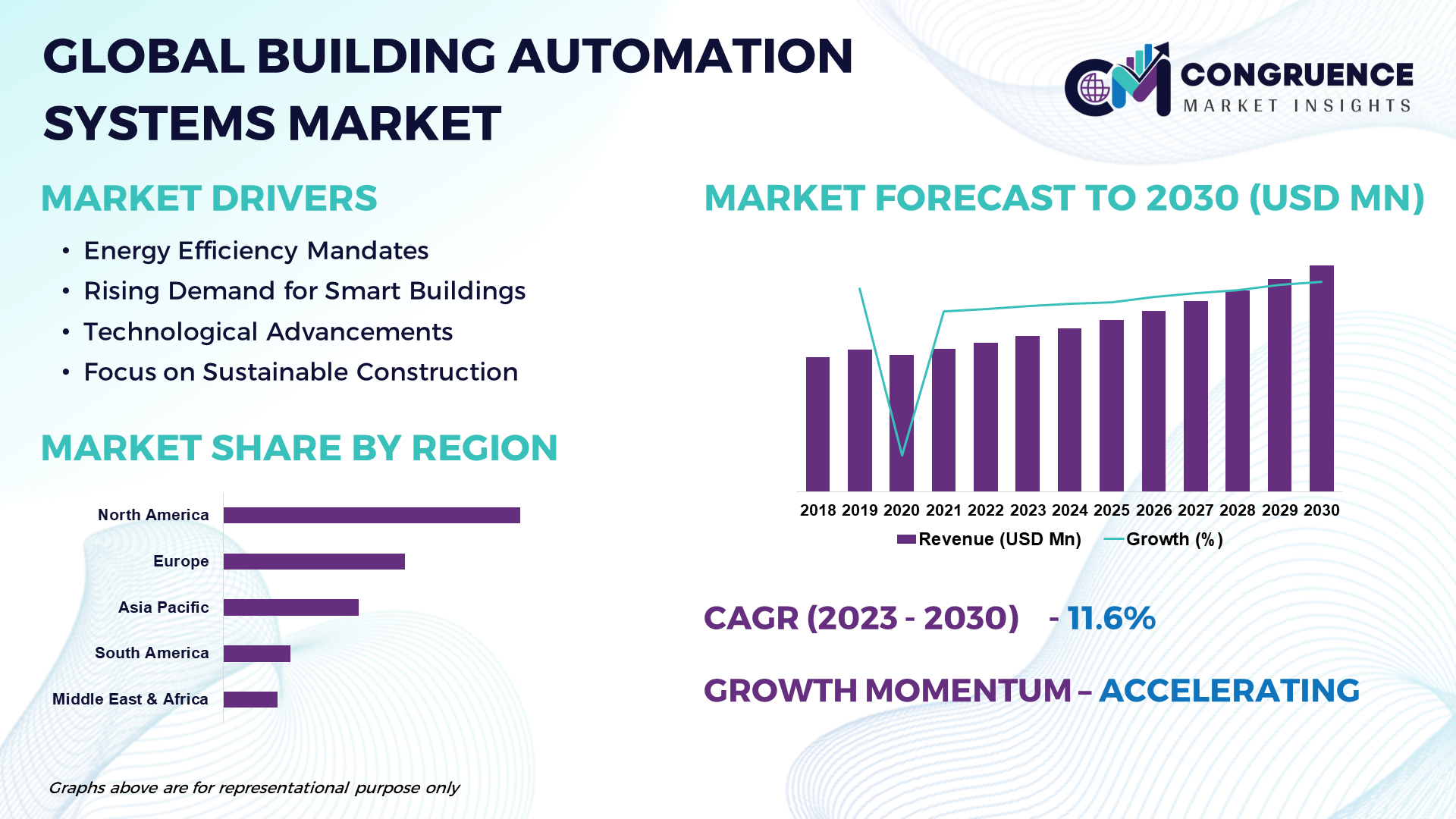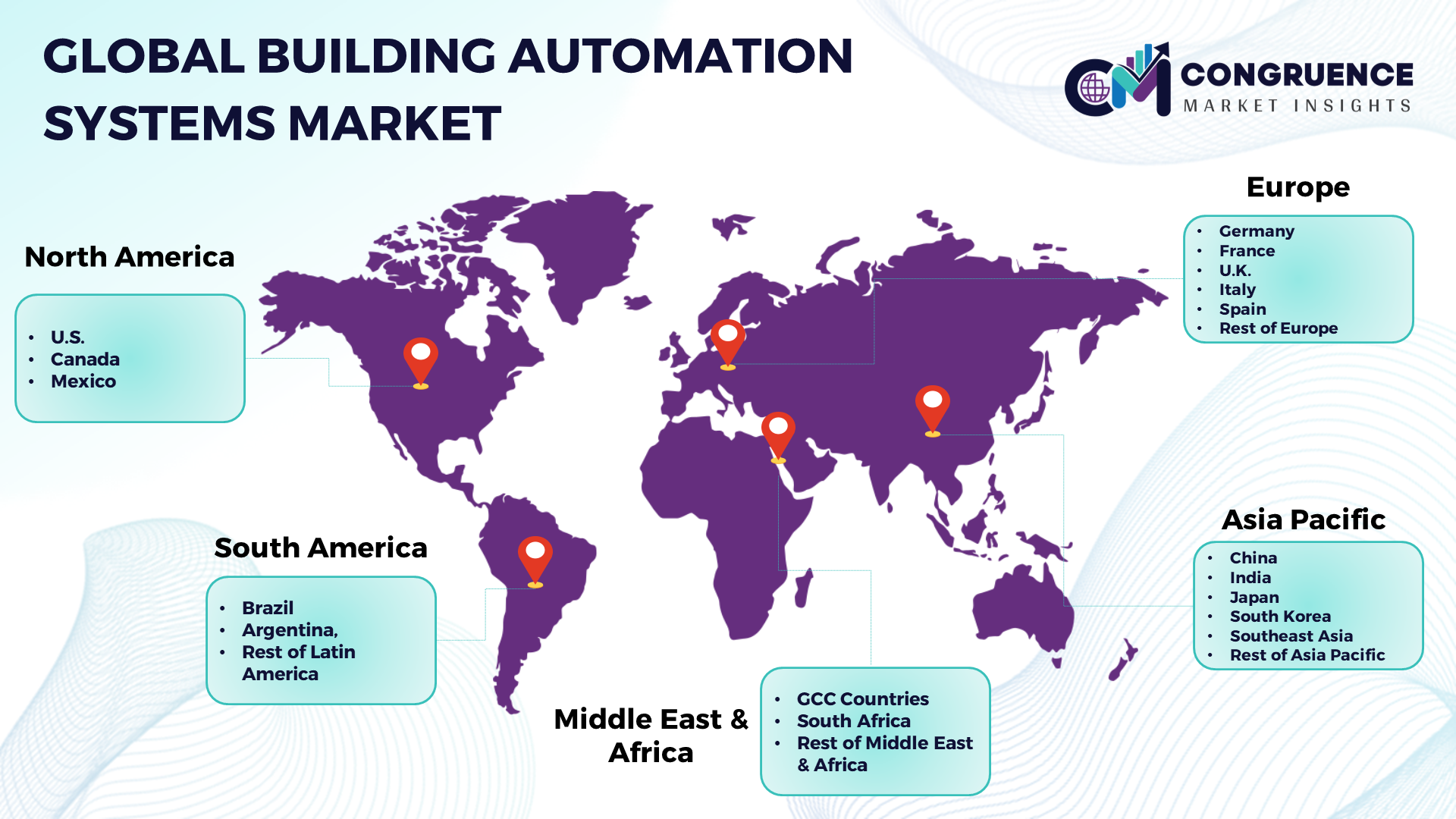Reports
The Building Automation Systems (BAS) market stands at the forefront of revolutionizing the efficiency and sustainability of modern structures. These systems, encompassing HVAC (Heating, Ventilation, and Air Conditioning), lighting control, security and access control, and fire and life safety, play a pivotal role in optimizing energy usage, enhancing occupant comfort, and ensuring the safety of buildings. With an impressive CAGR of 11.6% projected from 2023 to 2030, the Global Building Automation Systems Market anticipates substantial growth, driven by the increasing demand for smart and sustainable building solutions, stringent energy efficiency regulations, and the growing focus on creating intelligent and connected built environments. Key system types in the market include HVAC, lighting control, security and access control, fire and life safety, and others, each contributing to the seamless integration and automation of building functions. Building Automation Systems are offered through hardware, software, and services, providing a comprehensive solution for diverse applications in commercial, residential, and industrial settings.

Building Automation Systems Market Major Driving Forces
Energy Efficiency Mandates: Stringent regulations and mandates for energy efficiency drive the adoption of Building Automation Systems, enabling precise control and optimization of energy consumption in buildings.
Rising Demand for Smart Buildings: The growing preference for smart buildings, equipped with intelligent systems for enhanced comfort, security, and operational efficiency, fuels the demand for advanced Building Automation Systems.
Technological Advancements: Ongoing technological advancements, including the integration of IoT (Internet of Things) and AI (Artificial Intelligence), contribute to the development of smarter and more responsive Building Automation Systems.
Focus on Sustainable Construction: The global emphasis on sustainable and green construction practices promotes the adoption of Building Automation Systems to reduce environmental impact and achieve energy-efficient building operations.
Building Automation Systems Market Key Opportunities
Integration of IoT and AI: Opportunities lie in further integrating IoT and AI technologies to create intelligent, self-learning Building Automation Systems that adapt to occupant behavior and environmental conditions.
Enhanced Cybersecurity Measures: The increasing connectivity of Building Automation Systems presents opportunities for the development of robust cybersecurity solutions to safeguard against potential cyber threats and ensure data integrity.
Predictive Maintenance Solutions: Opportunities abound in the development of predictive maintenance solutions, leveraging data analytics and machine learning to anticipate and address potential issues in building systems before they occur.
Building Automation Systems Market Key Trends
· Open Systems Architecture: The trend towards open systems architecture, allowing interoperability and integration with diverse building automation devices and technologies for seamless operation.
· Cloud-Based Building Management: The adoption of cloud-based building management solutions, enabling remote monitoring, control, and data analytics for building systems from anywhere in the world.
· Occupancy and Space Utilization Analytics: The growing trend of using occupancy and space utilization analytics in Building Automation Systems, optimizing lighting, HVAC, and other functions based on real-time occupancy data.
· Emphasis on User Experience: The increasing focus on enhancing the user experience with intuitive and user-friendly interfaces for building occupants to interact with and control automation systems.

Market Competition Landscape
The global Building Automation Systems market features intense competition, with key players focusing on innovation, interoperability, and sustainability. Companies actively engage in research and development to introduce advanced solutions that address the evolving needs of modern buildings. Notable players in the market include:
· Siemens AG
· Honeywell International Inc.
· Johnson Controls International plc
· Schneider Electric SE
· United Technologies Corporation (UTC)
· ABB Ltd.
· Legrand
· Ingersoll Rand Inc.
· Delta Controls Inc.
· Crestron Electronics, Inc.
These companies play a crucial role in shaping the future of intelligent and connected buildings, driving advancements in Building Automation Systems and contributing to the global shift toward sustainable and efficient built environments.
|
Report Attribute/Metric |
Details |
|
Base Year |
2022 |
|
Forecast Period |
2023 – 2030 |
|
Historical Data |
2018 to 2022 |
|
Forecast Unit |
Value (US$ Mn) |
|
Key Report Deliverable |
Revenue Forecast, Growth Trends, Market Dynamics, Segmental Overview, Regional and Country-wise Analysis, Competition Landscape |
|
Segments Covered |
· By System Type (HVAC, Lighting Control, Security and Access Control, Fire and Life Safety, Others) · By Offering (Hardware, Software, Services) · By Application (Commercial, Residential, Industrial) |
|
Geographies Covered |
North America: U.S., Canada and Mexico Europe: Germany, France, U.K., Italy, Spain, and Rest of Europe Asia Pacific: China, India, Japan, South Korea, Southeast Asia, and Rest of Asia Pacific South America: Brazil, Argentina, and Rest of Latin America Middle East & Africa: GCC Countries, South Africa, and Rest of Middle East & Africa |
|
Key Players Analyzed |
Siemens AG, Honeywell International Inc., Johnson Controls International plc, Schneider Electric SE, United Technologies Corporation (UTC), ABB Ltd., Legrand, Ingersoll Rand Inc., Delta Controls Inc., and Crestron Electronics, Inc. |
|
Customization & Pricing |
Available on Request (10% Customization is Free) |
